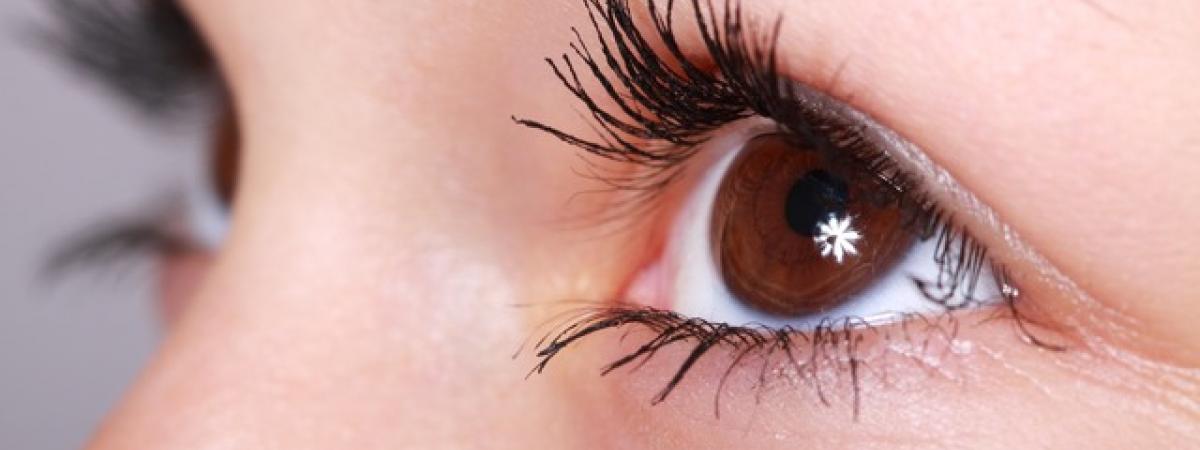Six wonders of the human eye
published in Reader's Digest,
26 March 2019

Being a little smaller than a ping pong ball, with an average diameter of 24mm (about an inch) and a weight of about 8 grams, each of your eyes is an awesome example of good things coming in small packages.
Your eyes are always on the move
Even when you think that you’re fixing your gaze on something, your eyes are darting around bringing a different view of the object into central vision. These eye movements are called ‘saccades’ (French for ‘jerk’) and are one of the fastest movements made by the human body, occurring several times each second (faster than a heartbeat).
During sleep, one of the five stages is known as rapid eye movement (REM) sleep since your eyes move rapidly in various directions. REM sleep repeats itself in cycles throughout the night; dreams are dreamed and memories may be made during this time.
You make tears when you’re not crying
According to Dr Frederic Martini, tears “reduce friction, remove debris, prevent bacterial infection, and provide nutrients and oxygen to the surface of the eye”. They also stop the eye from drying out.
You make about 1.2ml of tears per day, but normally don’t notice as they drain away through little holes on the margin of your eyelids near your nose.
When you are upset or in pain, you secrete more tears than you can manage and so they spill over onto the cheeks and you cry (or they drain into your nose giving you the sniffles).
You blink 500 million times in a lifetime
That’s about 15 times per minute. Blinking serves to move tear fluid across the eye, keeping the eyeball moist, and free from dust and debris. In this way, your eyelids are rather like windscreen wipers.
Eyebrows and eyelashes also serve to shield the eye, with eyelashes triggering the blinking reflex if touched unexpectedly.
Each eye is composed of 130 million light-sensitive cells
To put it in context, that’s a number double the population of the United Kingdom in each eye. The cells are named according to their shape with some 120 million of them known as rods and the others as cones. Rods work best in dimly lit rooms, at twilight and in pale moonlight; cones detect colour.
Vitamin A is crucial for the workings of your rods, and if your diet is lacking in this vitamin vision is affected – especially at night when rods are usually most responsive. You can get vitamin A from beta-carotene in carrots – and that’s why carrots are said to be good for your eyes (though it’s a myth that they let you see in total darkness).
Could your eyeball act as a crystal ball?
Disease in the body can be detected in your eyes
“I sometimes see pale retinal spots caused by diabetes, and they’re reminiscent of cumulus clouds. In patients with high blood pressure the branching, silvered shine on the retinal arteries resembles jagged forks of lightning,” writes Dr Gavin Francis, author of “Adventures in Human Being”, looking into patients’ eyes with an ophthalmoscope.
Recording eye movements may also aid diagnosis, since they are often altered in speed or size in Parkinson’s, dementia and Huntington’s. A dementia-causing protein in the brain can also be found in the retina of the eye and scientists wonder whether this might allow diagnosis of Alzheimer’s long before symptoms show. Could your eyeball act as a crystal ball?
The eyes are the window to your soul
There’s no doubt that your eyes convey emotion, but did you know that therapists can target eye movements to soothe your soul?
Eye-movement desensitisation and reprocessing (EMDR) is used in the treatment of post-traumatic stress disorder, and is the “most revolutionary, important method to emerge in psychotherapy in decades” according to Dr Herbert Fensterheim from Cornell University.
EMDR involves “bringing distressing trauma‐related images, beliefs, and bodily sensations to mind, whilst the therapist guides eye movements from side to side. More positive views of the trauma memories are identified, with the aim of replacing the distressing ones”. The Cochrane Library acknowledges that it can help in chronic PTSD. Exciting news; extraordinary eyes.
